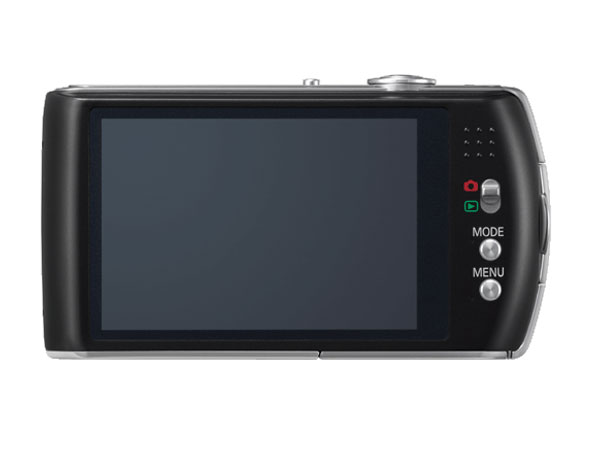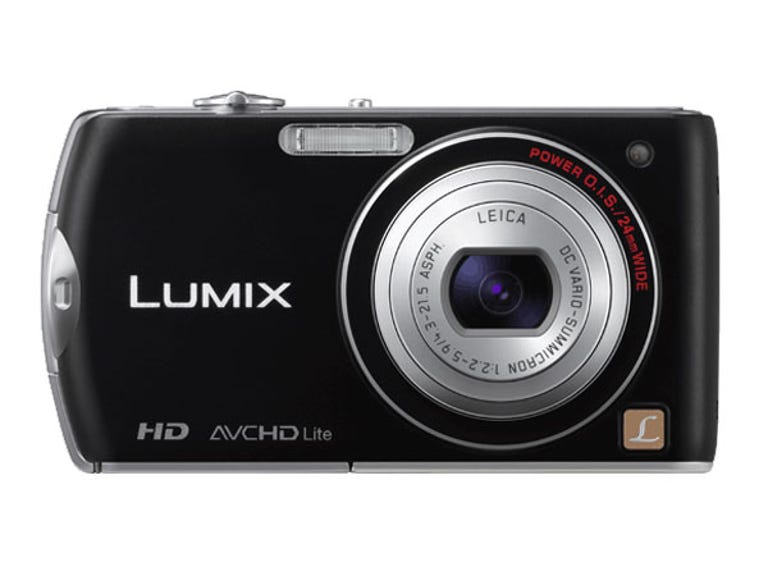 Why You Can Trust CNET
Why You Can Trust CNET Panasonic Lumix DMC-FX75 review: Panasonic Lumix DMC-FX75
On paper, the FX75 appears as if it should have everything down pat, with a bright lens, touchscreen and HD video. However, it falls short on the overall experience in areas like usability and image quality.
Design and features
Touchscreen cameras have never been Panasonic's strong point — see our review of the FP3 for a case in point — so the FX75 is already facing some fierce opposition from its own brand and the strengths of other cameras already in the market from brands like Sony.
The Good
The Bad
The Bottom Line
A 3-inch resistive touchscreen is the main avenue through which you interact with the camera, though there are a fair few physical buttons. Like Panasonic's previous attempts, the FX75 comes across as a little half-baked in its implementation due to the combined controls. Buttons like the shutter, power and video record definitely do need to be there in physical form, but the extra menu buttons could easily be transferred to the tactile interface without too much confusion.

The rear of the FX75 showing the combination of physical buttons and touchscreen. (Credit: Panasonic)
Unfortunately, the screen continues to provide a source of frustration during use as it's nearly impossible to see it outdoors and the icons on the screen are really too small to press accurately.
It's not all doom and gloom though, as where it stands out from other cameras in this price range is its wide maximum aperture of f/2.2. The FX75 also uses a Leica lens which is 24mm at its extreme focal length and extends to 5x optical zoom. Other features include touch to shoot, a staple of touchscreen cameras, a variety of colour modes (standard, happy, black and white, sepia) and HD video recording at 720p using AVCHD Lite.
The FX75 uses a rechargeable Lithium-ion battery and SD/SDHC/SDXC cards. It has HDMI and AV output on the side.
Performance
Panasonic rates the battery at 360 shots.
Image quality
For everyday snapshots in ample light, the FX75 does a decent job of rendering colours accurately, and delivering a reasonably sharp frame from edge to edge. As would be expected from such a wide-angle lens, there is distortion at either end, most prominently the barrel at the wide end.
In low light or even in situations where the FX75 decides to use a fast shutter speed in intelligent or standard automatic modes, it chooses to bump the ISO up to ridiculously high levels — see the ISO 5000 shot in the image sample section below. It's the frustrating experience of trying to use the touchscreen to compose and review shots that lets the FX75 down the most, as more often than not you'll try to change a shooting parameter on the screen and take a shot accidentally. The low-resolution screen also pales in comparison to the experience delivered on equivalent cameras like the Sony TX9.
The FX75 lets you use the optical zoom during video recording and, overall, quality is acceptable for a camera of this class. There's wind noise picked up by the mono microphone but not too distracting from the ambient sound.
Image samples
Click each image for full-sized samples from the FX75. No post-processing has been done to alter these photos.Exposure: 1/60, f/2.8, ISO 80 | Exposure: 1/25, f/2.2, ISO 160 |
Exposure: 1/160, f/4.1, ISO 5000 | Exposure: 1/320, f/4, ISO 80 |
Conclusion
On paper, the FX75 appears as if it should have everything down pat, with a bright lens, touchscreen and HD video. However, it falls short on the overall experience in areas like usability and image quality.


